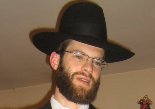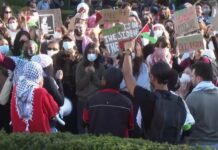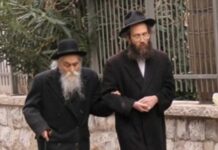 By Rabbi Y. Dov Krakowski
By Rabbi Y. Dov Krakowski
This week’s Sedra opens with the topic of the Hekter-ChalavimV’Aivarim (the burning of the fats and limbs of the fire offerings), and the Trumas-Hadeshen (the removing of the ashes left over from the burning of fats and limbs). The Torah ends this topic by telling us that we should light a constant fire on the Altar and that we shouldn’t commit any act that would cause it to be extinguished. Most elements of the Karbanos are somewhat peculiar and not easily understood and the Medrash Tanchuma points out a particular oddity present in this passage. The passage starts off by saying “Command Aharon and his sons saying these are the instructions of the Fire Offering etc.” While as a contained statement there seems to be no problem, the issue is that in last week’s Sedra the Torah referred to all of Klal-Yisroel in the command for the Fire-Offering, for even though the actual service is performed by a Kohen, the Karban itself is brought by the entire Klal-Yisroel. Following through with the Torah’s own reasoning the Midrash Tanchuma asks why does the Torah change and specify Aharon and the Kohanim instead of the entire Klal-Yisroel?
Yet another question is as follows: the Zohar Hakadosh tells us that Reb Meir explained that this idea of the constant fire and not extinguishing the fire represent in a symbolic way Talmud-Torah. Now, while one can draw all sorts of nice analogies between Torah and a constant fire, be it one’s obligations to Torah study, or be it an intrinsic quality of Torah, it still remains difficult to say that Torah study should be represented in the act of bringing a sacrifice. Firstly, Talmud Torah (Torah learning) is Torah and Karbanos is Avoda (Service), both of which are essential to the world’s existence. These, however, are two separate entities important in their own rights. Secondly, Torah is intrinsicly a Mitzvah Temidis (a permanent commandment), because if someone truly wants to do what God wants that person must always be searching for Hashem’s instructions. That searching by itself possibly constitutes Torah study (see Gr”a) and definitely has to result in Torah study. Karbanos on the other hand, are acts of doing something for Hashem. Since they are acts, they by definition aren’t constant, and the only thing that makes them constant is that we do them constantly. Moreover, this fire’s constancy isn’t due to an act done constantly, but rather to its not being extinguished. Hence, how can Torah learning be represented by a Karban since it is such a different sort of Mitzva?
The Tanchuma continues with what seems to be a disconnected idea: “whoever exalts himself will eventually be consumed by fire”. The Tanchuma proceeds to prove the statement and to list all sorts of people and nations who exalted themselves and then perished. The Tanchuma ends by saying that once Eisav finally reaches the summit of his exaltedness he too will perish, and only Klal-Yisroel and Hashem will remain.
The Tanchuma seems to leave the whole issue open ended.
The Midrash (see Medrash Rabba and Zohar) explains the issue of the continuous fire on a more esoteric level by saying that this continuous fire is here to atone for Avairos (sins) that are committed solely in the mind. The Midrash goes on to explain that since we know that generally speaking Hashem doesn’t punish for bad thoughts, but rather only when evil thoughts result in evil acts, it is thus clear that these sins that are committed in the mind can only be Avoda Zarah (Idol Worship) because idolatry is indeed punishable from the mere thinking of it. Thus the Midrash concludes that Aharon Hakohen is mentioned here in conjunction to this passage in order to make clear that he didn’t sin for a second in the Chet HaEgel (sin of the Golden Calf) for he himself is Hashem’s emissary to atone for even the mere thought of idolatry. Hence although it would seem that Aharon was in a sense responsible for the creation and serving of the Golden Calf the Torah is coming to clear him of all sin by making it clear that his intent was for Hashem’s sake.
Perhaps now we can approach the Tanchuma in a similar way. The Tanchuma is telling us that anybody who is looking only to make himself seem greater and more powerful in the eyes of others will eventually be consumed by fire and perish. While this is true in the negative sense, it stands to reason that the converse is also true: anyone who thinks only for the sake of Hashem and his Omnipotence will be raised and exalted. Perhaps the Tanchuma is telling us that this was the case with Aharon, and in the same vein, it will also eventually be true of Am-Yisroel. It can be well understood why it is this Avoda (sacrificial ceremony) that atones for thoughts of Avoda Zarah, because this Avoda entails taking the most important parts that remain from the animal and burning entirely, not even extinguishing their ashes. It captures the idea that every last bit – good and bad – must be only and purely for Hashem’s sake.
Now we can truly understand why it is that Torah is able to be represented by this particular Korban. Although Torah learning is a Mitzva that can be accomplished at almost any given time, there are still some periods when a person can’t fulfil Talmud Torah for all sorts of reasons. If a person is doing these other actions for his own selfish purposes then he is doing nothing that has any connection with Torah. However, if that person is doing completely Leshem Shamaim – for Hashem’s sake – he is indeed fulfilling the Torah and not taking himself out of Talmud Torah even in the most minor of ways.
{Matzav.com Newscenter}











